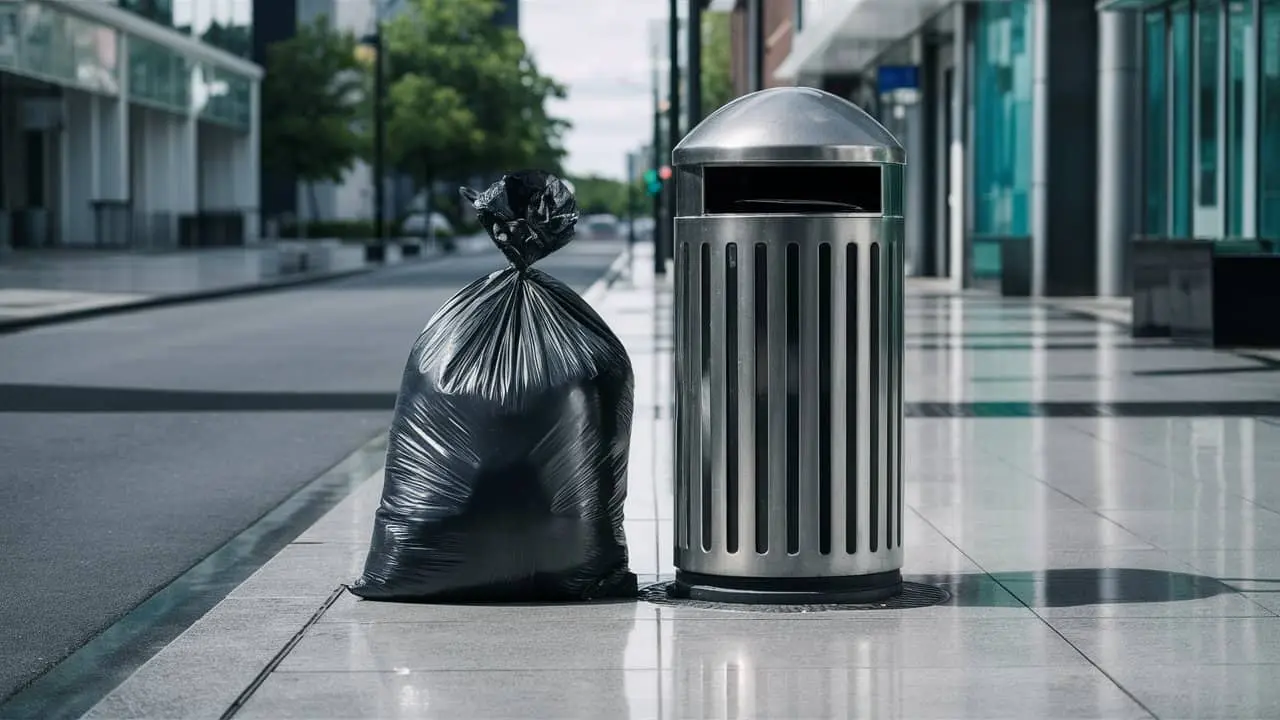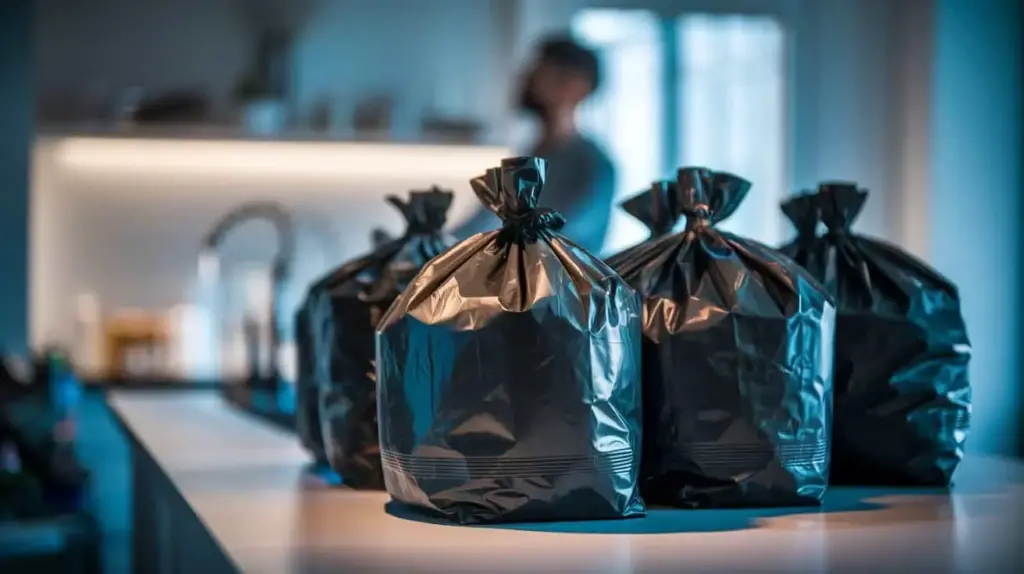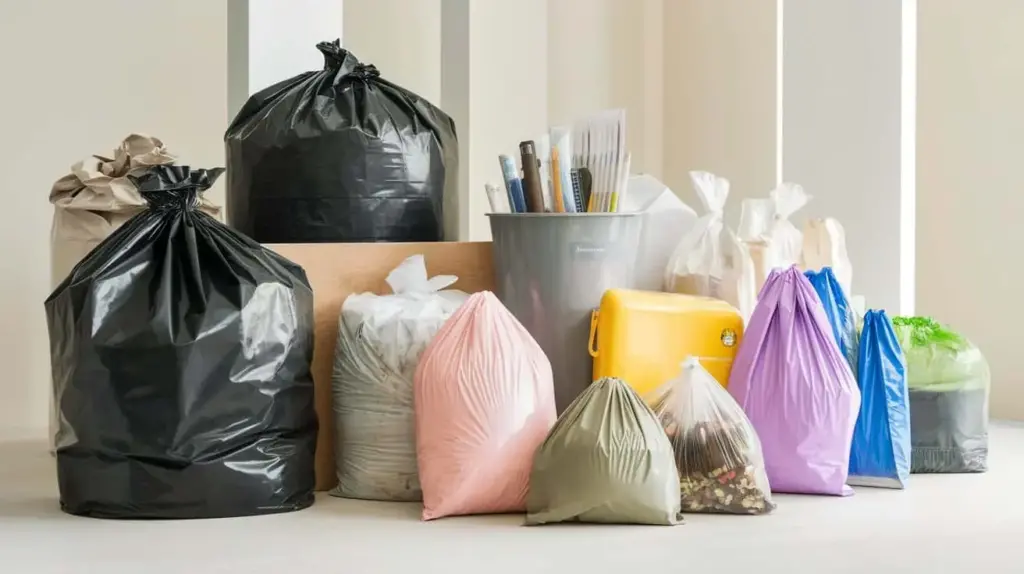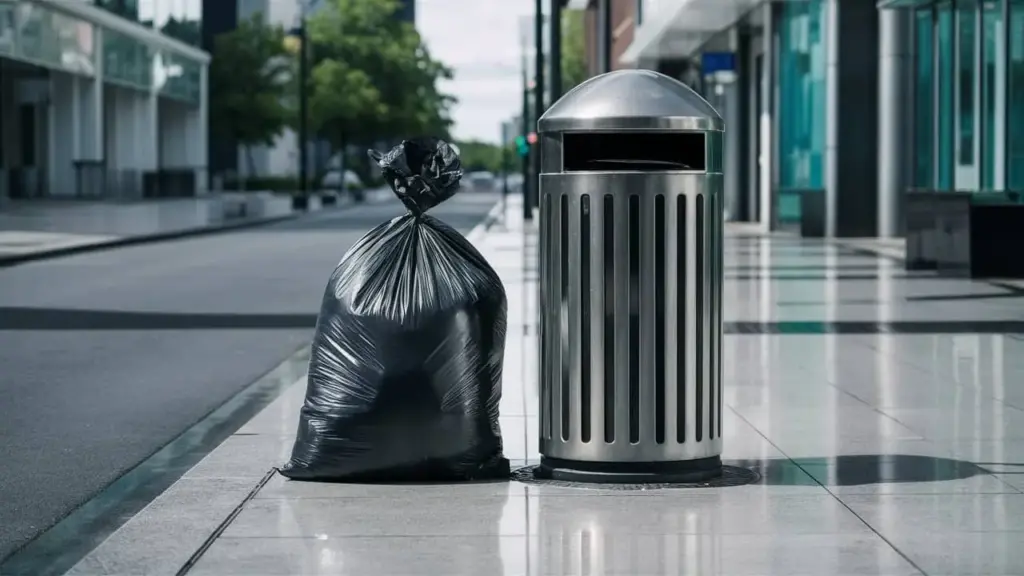Have you ever wondered what would happen if we didn’t have garbage bags? Imagine that on a rainy day, you rush to take the garbage out of the house. 🛒 If there was no garbage bag, where would this garbage be placed? Bad smells, pesky insects, and environmental pollution immediately come to mind. What is a garbage bag? This simple question may seem trivial, but the garbage bag is one of the most important human inventions to protect health and the environment. In this blog, we will examine this issue in a comprehensive and detailed way.
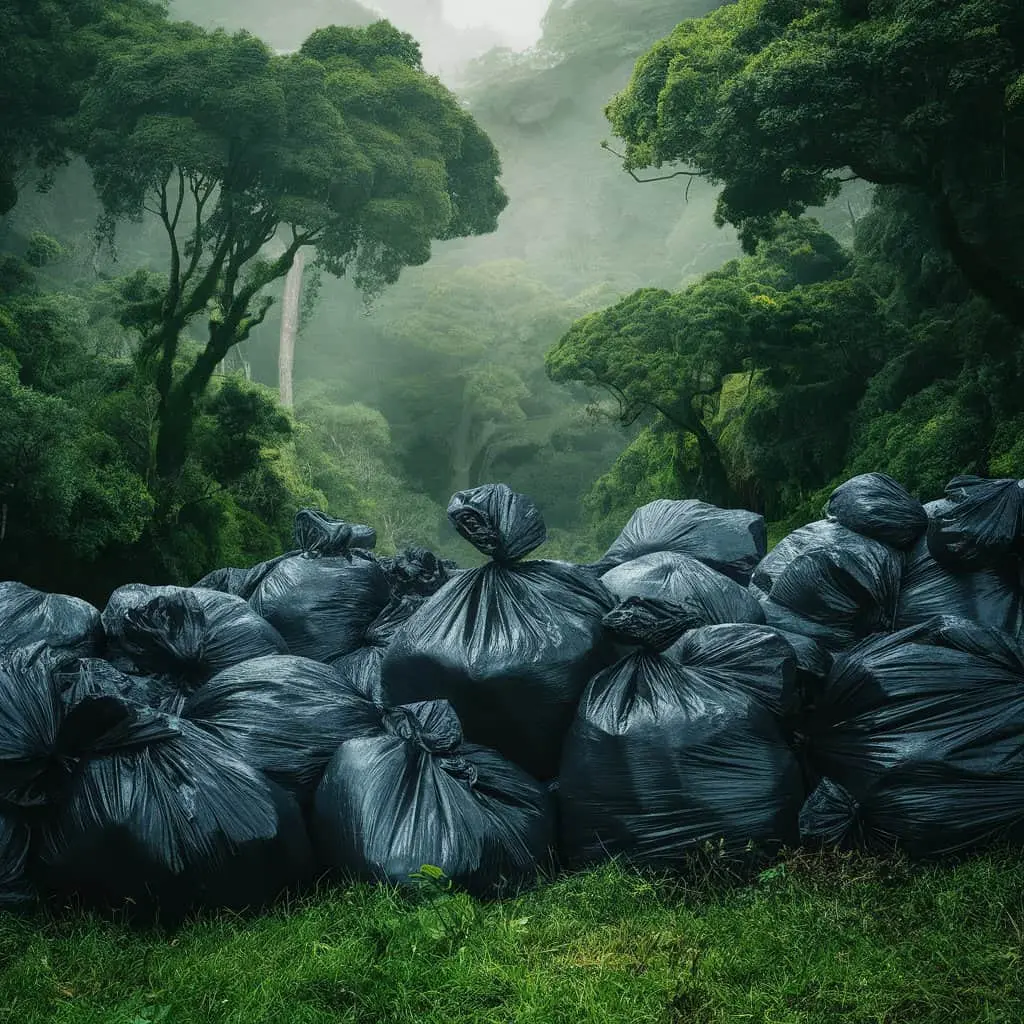
What is a garbage bag? A simple but vital invention🗑️
Definition and history of garbage bag
Buying a garbage bag is a simple but efficient product that is used to collect and carry garbage. These bags are made from different materials such as plastic, paper, and even fabric and are available in various sizes and colors.
The history of the garbage bag dates back to the 1950s when the first plastic bags were invented in Canada. This invention quickly replaced the traditional methods of garbage collection and became one of the essential tools in everyday life.
Today, garbage bags are widely used not only in homes but also in industrial centers, hospitals, and public places.

Garbage bag usage statistics📊
In recent years, statistics show that each person produces an average of more than 2 kilograms of waste per day. This volume of waste requires proper management, and garbage bags play an important role in this management.
In the world, more than 500 billion plastic garbage bags are produced and consumed every year, which shows the importance and vital role of this product in our lives.
Why is the garbage bag important?🌍
What is the role of a garbage bag?🛍️
Garbage bags help reduce pollution and maintain public health by preventing the release of waste into the environment. In the absence of garbage bags, garbage is easily scattered, causing unpleasant odors, attracting insects and rodents, and spreading diseases.
An important aspect of trash bags is to prevent direct contact with the trash. This is not only beneficial for personal hygiene but also ensures public health.
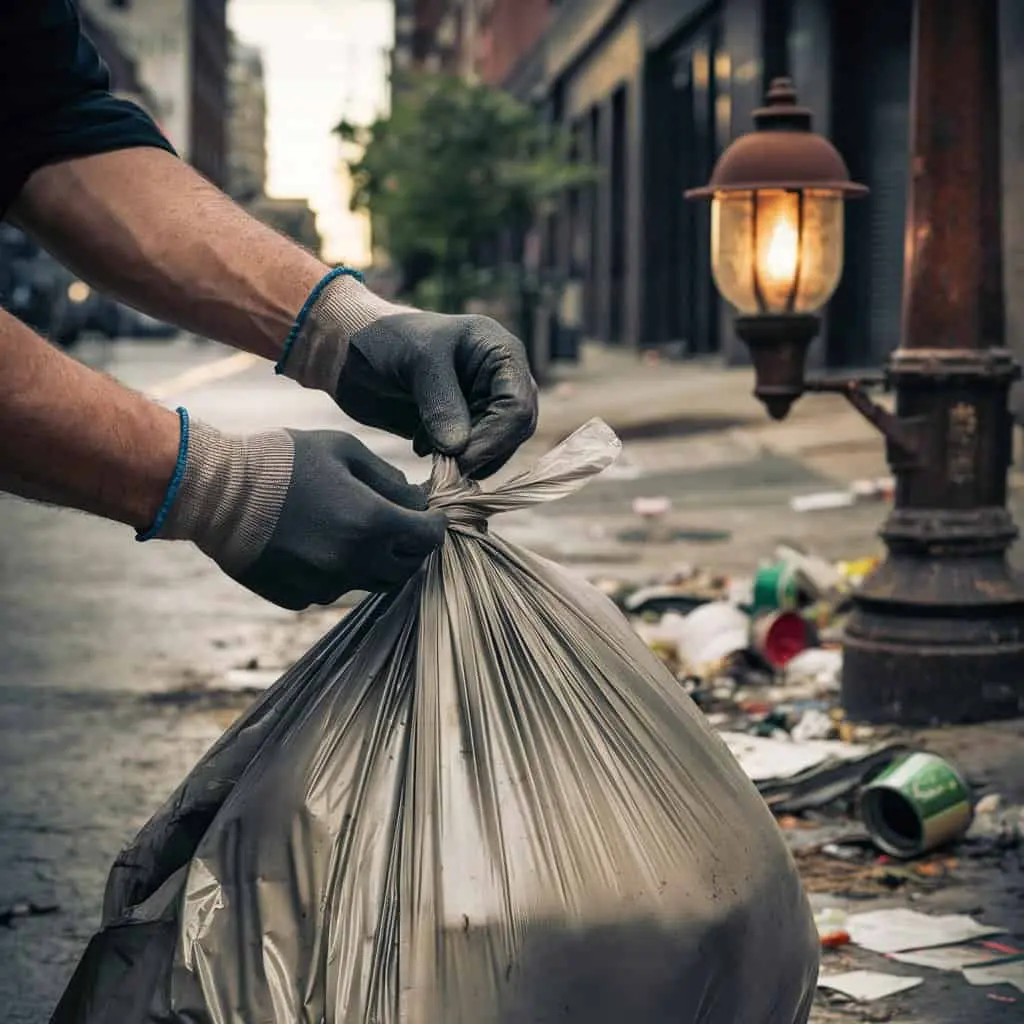
Relation of garbage bags with public health🧼
Correct use of garbage bags can help reduce the risks of contact with waste and contaminated materials. These bags are especially important in places like hospitals and health centers that deal with infectious waste.
Infectious waste bags usually have specific colors and markings that are easy to identify and help ensure that hazardous waste is properly managed.
Types of garbage bags and their uses🎨
Ordinary plastic bags
These bags are made from traditional plastics such as polyethylene and are available in various shapes and sizes for domestic and industrial use. These bags are usually inexpensive and readily available.
Ordinary plastic bags are more suitable for dry and small waste. These bags are considered the most widely used type of garbage bags due to their low price and the ability to produce them in large quantities.

Biodegradable bags🌿
Biodegradable bags are made from natural materials such as corn starch, cellulose, and other plant materials. These bags are designed to decompose quickly in nature and help reduce plastic pollution.
The use of these bags is increasing, especially in cities that pay a lot of attention to environmental issues. Although these bags may be a little more expensive, they have positive effects on the environment in the long run.
Multi-layer and resistant bags🛡️
These types of bags are made of several layers of plastic or similar materials and are suitable for bulky and heavy waste. Multi-layer bags are more resistant and the possibility of tearing or leaking contents in them is much less.
These bags are especially used in industrial and construction centers that deal with heavy and sharp waste.

Bags for infectious waste🧪
These bags are commonly used in hospitals and health centers and are designed to collect infectious and hazardous waste. These bags are very safe due to the use of materials resistant to penetration and leakage.
The red color and warning signs on these bags help health workers manage hazardous waste properly.
Garbage bags and environmental issues🌱
Environmental challenges of plastic bags🌍
Plastic bags, if not managed properly, can remain in nature for years and cause a lot of pollution. Plastics that enter seas and rivers threaten marine life and enter the food cycle.
Statistics show that more than 8 million tons of plastic are thrown into the oceans every year, a significant part of which is plastic garbage bags.

More sustainable solutions♻️
Using biodegradable or reusable bags can help reduce environmental impact. These bags decompose in nature over time and have fewer negative effects on the environment.
In some countries, the use of plastic bags is banned or restricted and people are encouraged to use cloth or biodegradable bags.
Back to paper bags?📜
Paper bags were used as an alternative to plastic bags in the past, but with the advent of plastic, these bags became less popular. But now with the increase of environmental awareness, these bags have been noticed again.
Important points in choosing the right garbage bag🎯
Size and capacity📏
Depending on your needs, choose a bag with the right size and capacity. For small homes or offices, small bags are sufficient, but for industrial centers or large households, larger and more durable bags are recommended.
Larger capacity bags are suitable for bulky waste such as garden or construction waste.
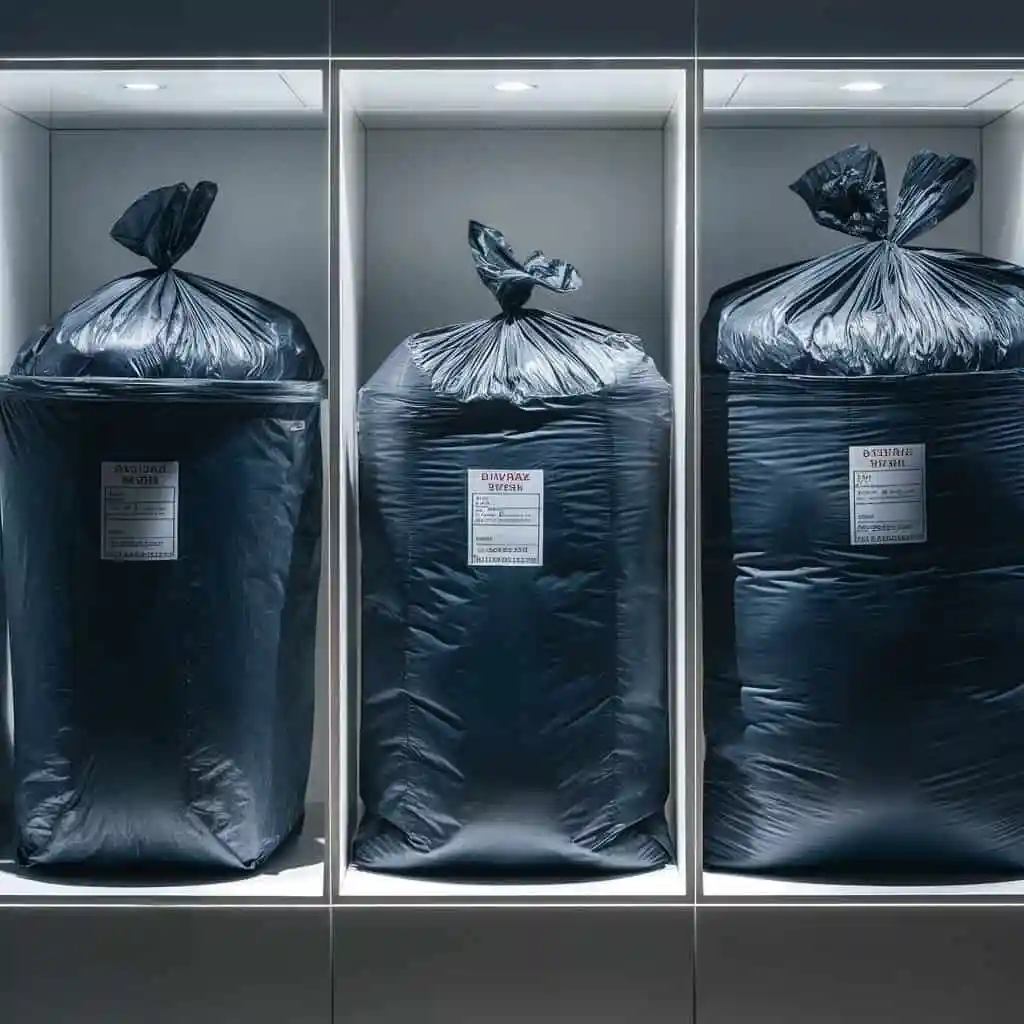
Resistance and strength💪
For bulky and heavy waste, choose high-strength bags to prevent leaks and tears. These bags are usually made of thicker material and have tighter stitching.
If you have sharp debris, use multi-layer bags that are more tear-resistant.
Attention to environmental issues🌱
If you care about the environment, look for biodegradable or recyclable bags. These bags not only help to save the environment but also help to reduce plastic waste with proper management.
Choosing bags with recycled materials or bags that can be recycled can be a positive step toward reducing environmental pollution.
How to use a garbage bag correctly🚮
Close the garbage bag properly🧷
Always close the trash bag properly to prevent contents from leaking and odors. It’s best to seal the bag in such a way that no air gets in, as air can help bacteria grow and produce odors.
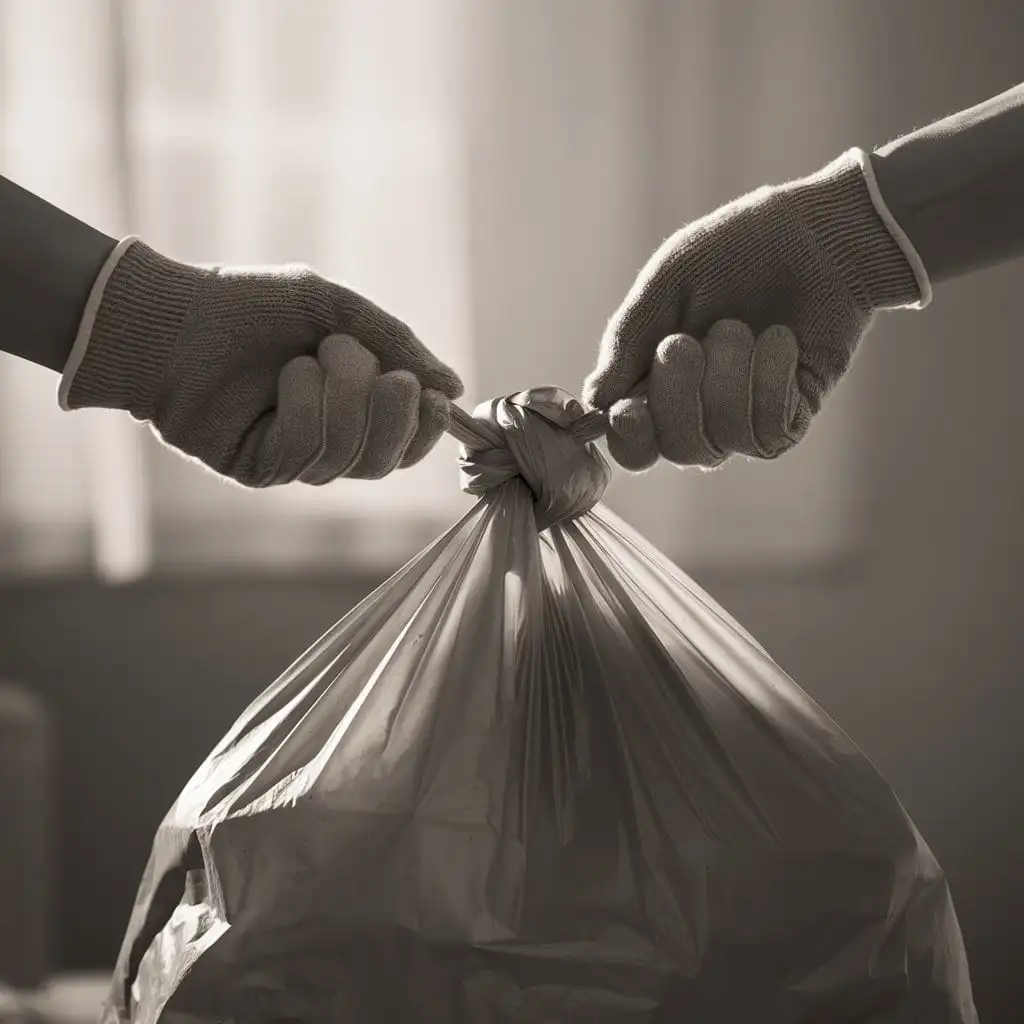
Maintenance and storage📦
Store garbage bags in a dry and cool place to maintain their quality. Bags exposed to direct sunlight or moisture may be damaged and lose their resistance.
Some trash bags can become brittle over time, so it’s best to store them in a cool, dry place away from direct sunlight.
Proper disposal🗑️
Put the garbage bags in special places for garbage disposal and avoid unauthorized disposal. If you use biodegradable bags, make sure they are disposed of properly so they break down properly.
In areas where garbage is collected separately, make sure you choose the right garbage bag for each type of garbage.
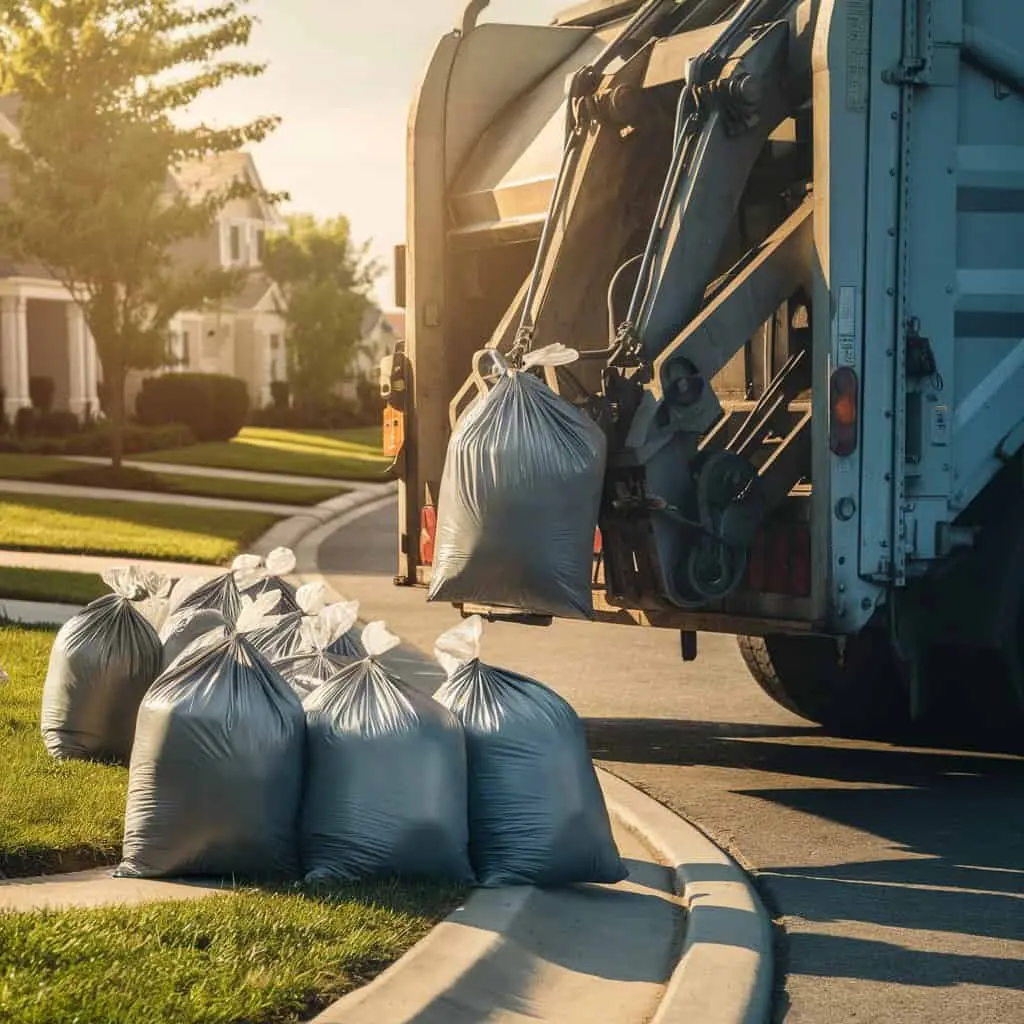
Garbage bag; A small tool with a big impact🌟
It may seem like a simple tool, but it plays a very important role in maintaining health and the environment. What is a garbage bag? This is a question that was fully addressed in this blog. From its definition and history to its various types and uses, we tried to show you how this simple invention has become one of the essential tools in our lives.
Choosing the right and optimal use of garbage bags can help us create a better world to live in. So the next time you use a trash bag, remember that it’s a small choice with a big impact.

